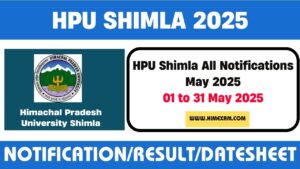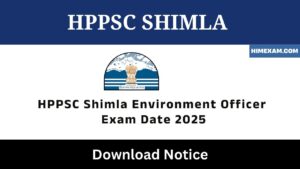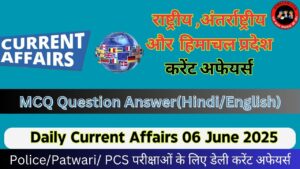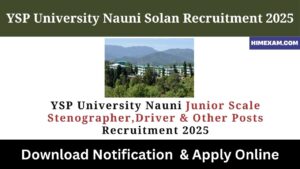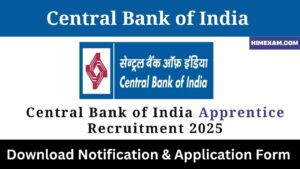Quit India Movement MCQ Question Answer In English
||Quit India Movement MCQ Question Answer In English||Quit India Movement Question Answer In English||
1. On 6th July, 1942, at the Working Committee of the Congress, Mahatma Gandhi discussed for the first time his ‘Quit India Policy’. The President of the Committee was
(A) Rajagopalachari
(B) Maulana Abul Kalam Azad
(C) Pandit Jawaharlal Nehru
(D) Dr. Annie Besant
2. Where did the Congress Working Committee meet to pass the ‘Quit India Resolution’ of 14th July, 1942?
(A) Bombay
(B) Wardha
(C) Lucknow
(D) Tripura
3. The Commander-in-Chief of the Indian Army during Quit India Movement was
(A) Lord Wavell
(B) Lord Linlithgow
(C) Lord Mountbatten
(D) None of the above
4. Quit India movement began on
(A) 9th August, 1942
(B) 10th August, 1942
(C) 15th August, 1942
(D) 16th August, 1942
5. In which ground of Bombay the proposal was passed for ‘Quit India Movement’?
(A) Marine drive ground
(B) Kala Ghoda ground
(C) Chamboor ground
(D) Gwaliya Tank
6. Why is the year 1942 important?
(A) Salt Satyagraha
(B) Non-Co-operation Movement
(C) Quit India Movement
(D) Independence of India
7. Where did the Congress launch the Quit India Movement on 8 August, 1942?
(A) Bombay
(B) Madras
(C) Calcutta
(D) Poona
8. The Quit India Movement started in
(A) July, 1942
(B) August, 1942
(C) September, 1942
(D) October, 1942
9. Consider the following statements. On the eve of launch of Quit India Movement, Mahatma Gandhi 1. Asked Government servants to resign.
2. Asked the soldiers to leave their posts.
3. Asked the Princess of the Princely states to accept the sovereignty of their people.
Which of the statements is/are correct?
(A) 1 and 2
(B) 2 and 3
(C) Only 3
(D) 1, 2 and 3
10. The statement, ‘We shall either free India or die in the attempt’ is associated with
(A) Non-Co-operation Movement
(B) Civil Disobedience Movement
(C) Individual Satyagraha
(D) Quit India Movement
11. The slogan ‘Do or Die’ was given by
(A) Bal Gangadhar Tilak
(B) Jawaharlal Nehru
(C) Bhagat Singh
(D) Mahatma Gandhi
12. With which one of the following movements is the slogan ‘Do or Die’ associated?
(A) Swadeshi Movement
(B) Non-Co-operation Movement
(C) Civil Disobedience Movement
(D) Quit India Movement
13. ‘Do or Die’ call was given by Gandhiji during
(A) Quit India Movement
(B) Civil Disobedience Movement
(C) Non-Co-operation Movement
(D) Khilafat Movement
14. When did Baldev Sahai resigned from the post of Advocate General?
(A) 1942
(B) 1943
(C) 1913
(D) 1911
15. Quit India Movement was launched in response to
(A) Cabinet Mission Plan
(B) Cripps Proposals
(C) Simon Commission Report
(D) Wavell Plan
16. Which one of the following observation is not true about the Quit India Movement of 1942?
(A) It was a Violent Movement
(B) It was led by Mahatma Gandhi
(C) It was a spontaneous Movement
(D) It did not attract the labour class in general
||Quit India Movement MCQ Question Answer In English||Quit India Movement Question Answer In English||
17. Quit India Movement was led by
(A) B.R. Ambedkar
(B) Jawaharlal Nehru
(C) Mahatma Gandhi
(D) None of the above
18. Which of the following parties did not support ‘Quit India Movement’?
(A) The Hindu Mahasabha
(B) The Communist Party of India
(C) The Unionist Party of Punjab
(D) All of the above
19. Which one of the following had supported the ‘Quit India Resolution’ of 1942?
(A) A.K. Azad
(B) Rajendra Prasad
(C) Sardar Vallabhbhai Patel
(D) Jawaharlal Nehru
20. By whom the ‘Quit India’ Resolution was moved in the Bombay Session of the Congress in the year 1942?
(A) Jawaharlal Nehru
(B) Narendra Deo
(C) Rajendra Prasad
(D) J.B. Kriplani
21. The draft of the ‘Quit India’ Resolution was prepared by
(A) Jawaharlal Nehru
(B) Mahatma Gandhi
(C) Maulana Abul Kalam Azad
(D) Sarojini Naidu
‘
22. Who was the President of the Indian National Congress when it passed the ‘Quit India’ resolution?
(A) Mahatma Gandhi
(B) Maulana Abul Kalam Azad
(C) Sardar Patel
(D) Pt. Jawaharlal Nehru
23. Who of the following was the President of Indian National Congress for consecutive six years?
(A) Jawaharlal Nehru
(B) Dadabhai Naoroji
(C) Abul Kalam Azad
(D) Gopal Krishna Gokhale
24. ‘Quit India Movement’ was reaction of
1. The disappointment of Indians against Cripps Mission.
2. The threat of Japanese attack on India.
3. To provoke countrymen to adopt violent means by Gandhiji’s articles.
4. Due to passing the proposal of August, 1942 by AICC. Choose the answer using the given options.
(A) 1 and 2
(B) 1, 2 and 4
(C) 2, 3 and 4
(D) All of these
25. Who among the following ran ‘Congress Radio’ during the ‘Quit India’ Movement?
(A) Aruna Asaf Ali
(B) Jai Prakash Narayan
(C) Usha Mehta
(D) None of the above
26. With reference to Indian freedom struggle, Usha Mehta is well known for
(A) Running the Secret Congress Radio in the wake of Quit India Movement
(B) Participating in the Second Round Table Conference
(C) Leading a contingent of Indian National Army
(D) Assisting in the formation of Interim Government under Pandit Jawaharlal Nehru
27. Who amongst the following made regular broadcasted on Congress Radio operated during Quit India Movement?
(A) Jai Prakash Narayan
(B) Subhash Chandra Bose
(C) Ram Manohar Lohia
(D) Sucheta Kriplani
28. The Prime Minister of England during Quit India Movement was
(A) Chamberlain
(B) Churchill
(C) Clement Attlee
(D) MacDonald
29. The American publicist who was with Mahatma Gandhi during his ‘Quit India’ Movement was
(A) Louis Fischer
(B) William L. Shiver
(C) Web Miller
(D) Negley Farson
30. Louis Fischer was the biographer of Mahatma Gandhi, he was
(A) An American journalist
(B) A British journalist
(C) A France journalist
(D) A German journalist
31. Louis Fischer, the biographer of Mahatma Gandhi, was associated with the movement of
(A) Civil Disobedience
(B) Individual Satyagraha
(C) Non-Co-operation
(D) Quit India Movement
32. Who among the following journalist is the biographer of Mahatma Gandhi?
(A) Louis Fischer
(B) Richard Gregg
(C) Web Miller
(D) None of the above
33. Which area was affected widest with the communal riots due to ‘Quit India’ Movement?
1. Bihar
2. Bengal
3. Gujarat
4. United Province
Select your answer of the following code.
(A) 1 and 2
(B) Only 1
(C) 2 and 3
(D) 1 and 4
34. Dr. Rajendra Prasad was arrested on 9th August, 1942 and was sent to
(A) Camp Jail
(B) Hazaribag Jail
(C) Bhagalpur Jail
(D) Bankipur Jail
35. Where was Mahatma Gandhi arrested in connection with Quit India Movement?
(A) Bombay
(B) Madras
(C) Calcutta
(D) New Delhi
36. After passing the resolution of ‘Quit India Movement’ Gandhiji was arrested
(A) in Yarvada Jail
(B) in Naini Jail
(C) in the fort of Ahmadnagar
(D) in Agha Khan Palace
37. On 9th August, 1942 the two arrested leaders of Hazaribag were
(A) Ramlal and Devilal
(B) Narayan Singh and Sukhla Singh
(C) Ramnath and Devnath
(D) Shiv Kumar and Ramanand
38. With the news of Gandhi and other Congress leaders arrest in 1942, a riot in Bihar took place, leading to a total breakdown in the rail services. The most affected area was
(A) Munger
(B) Gaya
(C) Patna
(D) Shahabad
39. In which context did Jai Prakash Narayan get the recognition of national leader?
(A) Quit India Movement
(B) Establishment of Congress Socialist Party
(C) Bhoodan Movement
(D) Making the member of Congress Executive Committee
40. Who among the following leaders had secretly escaped from the jail and organized underground activities during Quit India Movement?
(A) J.B. Kriplani
(B) Ram Manohar Lohia
(C) Achyut Patwardhan
(D) Jai Prakash Narayan
||Quit India Movement MCQ Question Answer In English||Quit India Movement Question Answer In English||
41. Where was Shri Yogendra Shukla brought on the 7th December, 1942?
(A) Ranchi
(B) Munger
(C) Patna
(D) Bhagalpur
42. Who was the wife of Mr. Jagat Narayan Lal?
(A) Mrs. Rampyari
(B) Mrs. Sundari Devi
(C) Mrs. Bhagawati Devi
(D) Mrs. Mangala Devi
43. During the freedom struggle, Aruna Asaf Ali was a major woman organizer of underground activities in
(A) Civil Disobedience Movement
(B) Non-Co-operation Movement
(C) Quit India Movement
(D) Swadeshi Movement
44. With which one of the following Movements is Aruna Asaf Ali associated?
(A) Non-Co-operation Movement
(B) Civil Disobedience Movement
(C) Individual Satyagraha
(D) Quit India Movement
45. Given below is a list of places. Name those where parallel Governments were established during ‘Quit India Movement’. Select your answer from the code given below the list.
1. Balia
2. Satara
3. Hazaribagh
4. Meerut
5. Agra
Code
(A) 1 and 2
(B) 1, 2 and 3
(C) 2, 3 and 5
(D) 1, 3 and 4
46. In which of the following years the Jatiya Sarkar was formed in the Midnapur district of Bengal?
(A) 1939
(B) 1940
(C) 1941
(D) 1942
47. In which of the following district of Uttar Pradesh, parallel Government was established during Quit India Movement?
(A) Allahabad
(B) Lucknow
(C) Ballia
(D) Faizabad
48. After Quit India Movement, C. Rajagopalachari issued a pamphlet entitled ‘The Way Out’. Which one of the following was a proposal in this pamphlet?
(A) The establishment of a ‘War Advisory Council’ composed of representatives of British India and the Indian States
(B) Reconstitution of the Central Executive Council in such a way that all its members, except the Governor-General and the Commander-in-Chief, should be Indian leaders
(C) Fresh elections to the Central and Provincial Legislatures to be held at the end of 1945 and the Constitution making body be convened as soon as possible
(D) A solution to the Constitutional deadlock
49. Assertion (A): Lord Linlithgow described the August Movement of 1942 as the most serious rebellion since Sepoy Mutiny.
Reason (R): There was a massive upsurge of the peasantry in certain areas.
(A) Both (A) and (R) are true and (R) is the correct explanation of (A)
(B) Both (A) and (R) are true, but (R) is not the correct explanation of (A)
(C) (A) is true, but (R) is false
(D) (A) is false, but (R) is true
50. Assertion (A): Quit India Movement succeeded in awakening and courraging people.
Reason (R): People have assimilated the slogan of ‘Do or Die’.
In above context, which of the following is right?
(A) Both (A) and (R) are individually true and (R) is the correct explanation of (A)
(B) (A) and (R) are individually true, but (R) is not the correct explanation of (A)
(C) (A) is true, but (R) is false
(D) (A) is false, but (R) is true
51. Two statements are given below; the one is Assertion (A) and other is the Reason (R), read them carefully.
Assertion (A): Rashtriya Swayam-sevak Sangh (RSS) was separate from Quit India Movement, 1942.
Reason (R): It thought that the freedom of India will be delayed due to this Movement. Which of them correct from the given statements?
(A) (A) and (R) are individually true, and (R) is the correct explanation of (A)
(B) (A) and (R) are individually true, but (R) is not the correct explanation of (A)
(C) (A) is true, but (R) is false
(D) (A) is false, but (R) is true
52. Consider the statements given below and select the correct answer from the code given below. Assertion (A): As a result of Quit India Movement, British and Muslims came closer to each other due to similar hatred against congress.
Reason (R): Jinnah had worked as staunch ally of the British Government and asked the Muslims to stay away from Congress’s Movement of 1942.
(A) Both (A) and (R) are individually true and (R) is the correct explanation of (A)
(B) (A) and (R) are individually true, but (R) is not the correct explanation of (A)
(C) (A) is true, but (R) is false
(D) (A) is false, but (R) is true
53. Assertion (A): The Quit India Movement marked the culmination of Indian National Movement. Reason (R): After the Quit India Movement it was a need of time to find a suitable mechanism for transfer of power.
Select the correct answer from the code given below.
(A) Both (A) and (R) are true and (R) is the correct explanation of (A)
(B) Both (A) and (R) are true, but (R) is not the correct explanation of (A)
(C) (A) is true, but (R) is false
(D) (A) is false, but (R) is true
||Quit India Movement MCQ Question Answer In English||Quit India Movement Question Answer In English||
Answer Sheet1. (B) 2. (B) 3. (A) 4. (A) 5. (D) 6. (C) 7. (A) 8. (B) 9. (C) 10. (D) 11. (D) 12. (D) 13. (A) 14. (A) 15. (B) 16. (B) 17. (C) 18. (D) 19. (C) 20. (A) 150 Objective General Studies 21. (B) 22. (B) 23. (C) 24. (B) 25. (C) 26. (A) 27. (C) 28. (B) 29. (A) 30. (A) 31. (D) 32. (A) 33. (D) 34. (D) 35. (A) 36. (D) 37. (D) 38. (A) 39. (A) 40. (D) 41. (C) 42. (A) 43. (C) 44. (D) 45. (A) 46. (D) 47. (C) 48. (D) 49. (A) 50. (A) 51. (C) 52. (A) 53. (A)
Read More: – Himachal Pradesh General Knowledge

%20MCQ%20Question%20Answer%20In%20English%20(2).png)

